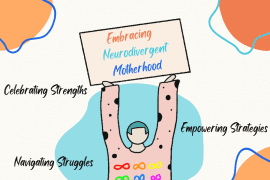By Lelia Schott
In our very first moments on earth, we seek connection. We spend our entire lives seeking or avoiding it depending on whether it feels safe or threatening.
An important prerequisite for an emotionally healthy home is how safe each family member feels to rest in relationship with one another and grow into their most resourceful self.
Our first and most intimate relationships create a blueprint. We are hardwired for connection so we will keep longing for it. We need to be connected to ourselves and others we trust.
Without connection, without fulfilling attachment and true authenticity, we seek unhealthy substitutes and coping mechanisms. Without a connection to ourselves (authenticity) and others (attachment), we cannot thrive.
Our first and most intimate relationships create a blueprint. We are hardwired for connection so we will keep longing for it.
Dr. Gabor Mate describes attachment as “invited to exist” and authenticity as “invited to be ourselves.” He goes on to say, “Attachment is to be us and authenticity is to be you.” Dr. Mate explains that when people are faced with the choice of either attachment or authenticity in their relationships, most will go for attachment first, seeking approval and recognition from others.
To explain what happens when children are forced to choose between two vital emotional and relational needs, attachment and authenticity, I like to use the terms coined by Dr. Bonnie Harris, “harmony kids” and “integrity kids.”
If forced to choose, harmony kids will push down their feelings and needs to stay in attachment whereas integrity children cannot betray their authenticity for the sake of attachment.
Harmony children are at greater risk of becoming people-pleasers, anxious and codependent when they habitually give up their needs and push down their feelings for the sake of others. Integrity children are at risk of being ego-centric, avoidant, and detached if they don’t have safe spaces to learn how to feel vulnerable feelings.
When a parent habitually removes affection or acceptance from a child as a means of coercing compliance, the child is forced into codependency or rebellion.
The child has to work for attachment and forfeit authenticity, or fight for authenticity and forfeit attachment.
When a parent habitually removes affection or acceptance from a child as a means of coercing compliance, the child is forced into codependency or rebellion.
We don’t want our children to have to choose between love, belonging, and harmony (attachment) and self-love, self-acceptance, and integrity (authenticity).
3 Ways To Meet Your Child’s Needs For Belonging – Attachment And Authenticity
Unfortunately, removing love and acceptance is a popular behaviour modification technique used by loving parents. We want our children to rest in our love, trust us, and love and trust themselves. Punishment and conditional acceptance always breaks trust. Here are a few ways you can meet both of these important needs for your children.
1. Co-regulation
Children learn how to calm down with a calm adult, until maturity. The more often a child experiences a nurturing presence in times of distress, the more easily they grow to nurture themselves and others.











